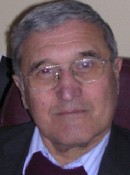
Plenary Lecture
A Concept on Thermal Equilibrium Establishment and Its Use in Heat Treating Industry

Dr. Nikolai Kobasko
Fellow of ASM
IQ Technologies Inc
Akron, USA
&
Intensive Technologies Ltd
Kyiv, Ukraine
E-mail: NKobasko@aol.com
Abstract: Heat treating of materials is connected with two or three thermal equilibrium establishment and evaluation of transition time from an initial thermal equilibrium to another one. For example, a system of steel components during batch quenching first is heated to austenitizing temperature T0 (800oC – 900oC) and then is transferred to liquid medium with temperature Tm . After cooling in liquid is finished, the third equilibrium establishment follows when system is subjected to deep cryogenic treatment. In both cases transition time is the main technological parameter which should be properly determined to be a right recipe. In the plenary lecture the equations for cooling time evaluation of steel parts of any configuration are proposed. Also, a new idea on thermal equilibrium establishment is discussed which is based on analyzing parabolic and hyperbolic heat conductivity equations. According to the main postulate of thermodynamics, the thermal equilibrium is always realized and its time of appearing is a finite value. According to classic parabolic heat conductivity equation, the thermal equilibrium is established when time is infinity. The contradiction can be solved by taking into account thermal fluctuations which destroy exponential law of cooling (heating) and lead to finite time of equilibrium establishing. In the presentation, it is shown that thermal equilibrium is realized in certain (finite) time which depends very slightly on initial temperature and in many cases is almost the same. However, transition time considerably depends on size of system, its configuration, thermal properties of material, properties of liquid, and its agitation. The correlations on this subject are provided to calculate system’s transition time from one thermal equilibrium to another. The results of investigations are used for the new technologies development which increase wear resistance of tools and service life of machine components.
Brief Biography of the Speaker: Dr. Kobasko received his Ph.D. from the National Academy of Sciences of Ukraine. He is a leading expert on quenching and heat transfer during the hardening of steels. He was the Head of the laboratory of the Thermal Science Institute of the National Academy of Sciences of Ukraine. He is Director of Technology and Research and Development for IQ Technologies, Inc., Akron, Ohio and supervisor of Intensive Technologies, Ltd, Kyiv, Ukraine. The aim of both companies is material savings, ecological problem-solving, and increasing service life of steel parts. He is an ASM International Fellow (FASM). Dr. Kobasko is the author and coauthor of more than 270 scientific and technical papers, several books and more than 30 patents and certificates. He received the Da Vinci Diamond Award and Certificate in recognition of an outstanding contribution to thermal science.
Dr. Nikolai Kobasko was Editor-in-Chief and Co-Editor of the WSEAS Transactions on Heat and Mass Transfer; and is currently a member of the Editorial Board for the International Journal of Mechanics (NAUN) and the Journal of ASTM International (JAI).